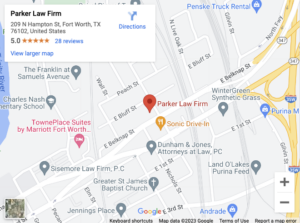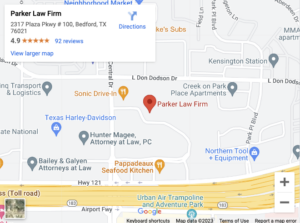DFW Works to Tighten the Leash on Dog Bite Incidents
Metroplex Experiences Drastic Rise in Dog Bites
Not all dogs live up to their reputation as man’s best friend. The Centers for Disease Control and Prevention estimates that 4.5 million people sustain a dog bite each year. More than 50% of these victims are children, according to the Humane Society, and the rate of dog bites among children is highest between the ages of 5-9.
The American Veterinary Medical Association suggests that weather may contribute to a rise in dog bite incidents. With the warmer temperatures we are experiencing in DFW, more owners are keeping their dogs outside. In many cases, damaged or inadequate fencing is to blame for dogs escaping an owner’s property.
A recent story on Fox 4 KDFW reported that Dallas Animal Services saw a 37% increase in dog bites compared to a year ago. Surprisingly, the most significant number of incidents didn’t involve unowned stray dogs. Of the 205 dogs involved, 147 of these belonged to owners who hadn’t contained their pets. Brad Parker says, “Dog ownership is a big commitment. It’s important that your dog isn’t a nuisance or danger to others. That means keeping them on a leash or in your yard. One of the greatest ways to reduce dog bites is education for both dog owners and the public. The priority should be on accessible education around the prevention of these incidents.”
Many studies have been conducted about which types of dogs are responsible for the most bites. A contributing factor for why certain breeds are included is their bite force, which is the amount of pressure that a dog can produce when they clamp their jaw, measured in Pounds per Square Inch (PSI). While the data is inconclusive, these breeds do often appear at the top of most lists:
- Pitbull
- Rottweiler
- German Shepherd
- American Bulldog
- Mastiff
- Husky
Tips For Avoiding Dog Bites
- Never approach a stray or unfamiliar dog.
- Always ask the owner before petting a dog.
- Never run from or toward a dog and scream.
- Slowly present the back of your hand first for the dog to smell.
- Never leave small children and dogs unattended.
- If knocked over by a dog, roll into a ball and lie still.
- Do not stare a dog in the eyes because it may view that as threatening.
- Do not disturb a dog that is sleeping, eating, or caring for puppies.
- Do not pet service dogs because they are working.
- Do not tease a dog, pull its ears or tail, or squeeze it too hard.
How To Read A Dog’s Body Language
Dogs use body gestures, postures, and vocalizations to express their emotions. Just like people, dogs have unique personalities, and they don’t all express themselves in the same way. A dog displaying any of these aggressive indicators is ready to react to a stressor:
- Dogs hold their ears differently depending on the situation. A dog that is afraid will typically hold their ears back and against their head.
- A dog’s eyes can also indicate their emotion. If their eyes are fixed on the stimulus with a hard, unwavering stare and wrinkles across the forehead, they are in an aggressive mode.
- Avoid a dog with tension around the mouth or if they are exposing their teeth.
- A fearful dog may hold their tail low or tucked before an act of aggression but raise it during the act.
- A frozen body posture that is rigid and tense could indicate that a dog feels threatened.
- Fur that is raised straight up, particularly across the shoulders and at the base of the spine near the tail, can be a sign that a dog is ready to attack.
- Also, be aware if a dog’s weight is shifted forward in a stiff-legged stance.
Advice To Dog Owners
- Socialize your dog from a young age to many different types of people and other animals.
- Enroll your puppy in dog obedience classes.
- Spay or neuter your dog because studies show that neutered animals are less likely to be aggressive.
- Teach children in your home how to behave around animals properly.
- Avoid playing tug of war with a dog, as many dogs interpret this as aggression.
- Do not allow your dog to roam unsupervised or off-leash.
- Utilize a muzzle when walking your dog in public if it has aggressive tendencies.
- Understand that a “Beware of Dog” warning sign will not suffice in situations where the dog should have been unable to access the victim. Ensure you have the resources to prevent your dog from escaping your property.
What To Do If You’re Bitten
- If the dog’s owner is present, request proof of rabies vaccination and get the owner’s name and contact information.
- Clean the bite wound with soap and water as soon as possible.
- Consult your doctor immediately or go to the emergency room.
- Contact the dog’s veterinarian to check vaccination records.
Brad says, “Texas follows the one-bite rule. This means that if a dog has bitten someone before, that dog may be classified as a dangerous dog regardless if the bite caused serious harm. Owners who know that their pets might be dangerous are liable if their dog attacks someone.” The Texas dog bite law may not be as simple as it seems, especially if the attack caused severe injuries. A qualified dog bite lawyer can help victims seek compensation for the following:
- Past and future medical bills
- Pain and suffering
- Lost wages
- Psychological counseling to overcome emotional trauma
- Disfigurement
Contact the Dog Bite Law Firm of Parker Law Firm Injury Lawyers in Texas for Help Today
For more information, please contact an experienced dog bite lawyer at Parker Law Firm Injury Lawyers to schedule a free initial consultation today. We have convenient locations in Fort Worth and Bedford, Texas.
Parker Law Firm Injury Lawyers – Fort Worth
209 N Hampton St,
Fort Worth, TX 76102
(817) 510-9400
Parker Law Firm Injury Lawyers – Bedford
2317 Plaza Pkwy #100,
Bedford, TX 76021
(817) 503-9200


